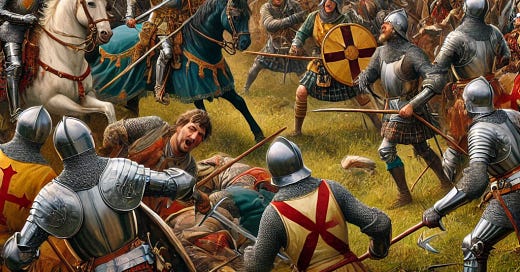In the summer of 1411, Aberdeen stood at the precipice of destruction. The formidable Donald of Islay, Lord of the Isles, had launched a sweeping military campaign through the north of Scotland, rallying thousands of clansmen from the Hebrides, Ross, and Lochaber. His claim to the Earldom of Ross — rooted in marriage but contested by the Crown — was more than a personal power grab; it was a deep flare-up in the centuries-long friction between Celtic Highlanders and the increasingly centralized Scottish state.
Donald’s army, said to be 10,000 strong, was a mobile, terrifying force. They had already marched through Moray and the fertile plains of the Enzie and Strathbogie, plundering as they advanced. Their goal was nothing less than the conquest of Aberdeen — the wealthy, self-governing royal burgh that represented all the economic and political power of the Lowlands in the northeast.
The townsfolk knew what was coming. A Highland invasion wasn’t just a threat to property — it was a cultural and existential crisis. Civic identity, royal allegiance, and the freedom of the burgh were on the line.
Keep reading with a 7-day free trial
Subscribe to Tales of Forgotten Scottish History to keep reading this post and get 7 days of free access to the full post archives.




